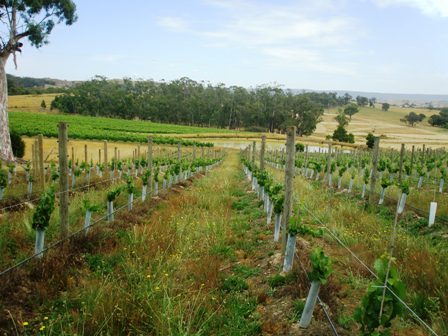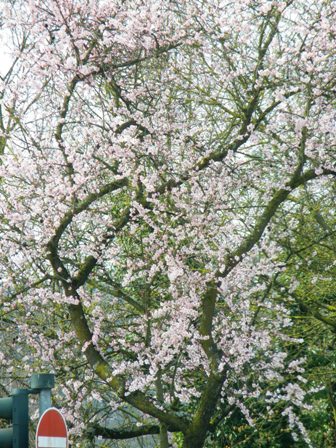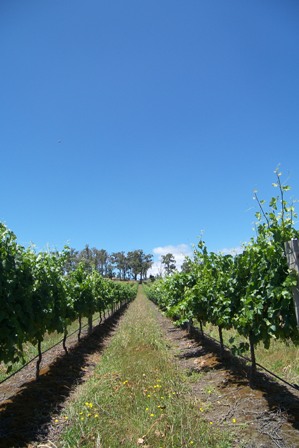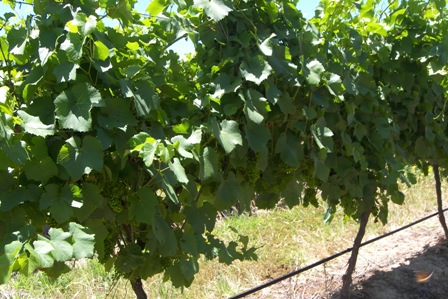As you probably know, I am busying myself with finding drinkable Thai wines. My first ventures into the world of Thai wines did not yield promising results. Alas, after some more tastings I was successful.

Main building, Gran Monte family Vineyard
We visited GranMonte Family Vineyard, a family winery in the Asoke Valley in Khao Yai, about a two hours drive north of Bangkok. This nascent wine business is owned by the family of Vissoth Lohitnavy. His daughter Nikki is the first-ever female oenologist of Thailand. She was recently awarded a Bachelor degree with honours by the University of Adelaide in South Australia.
The GranMonte Family vineyard is a state of the art boutique producer of fine wines. The return of Nikki marks a new chapter in the development of the family business. A new winery has been built and new equipment was bought including stainless steel tanks from Germany.

During the last couple of years Thailand has become a grape and wine producing country. High taxes on imported wines make sure that the international competition does not destroy the domestic wine industry. However, various awards won by Thai wines at international wine shows are proof that the wine in this tropical land has made good progress.
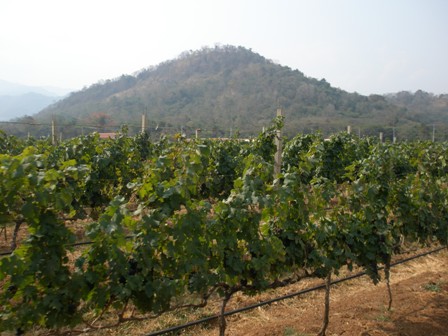
The general wisdom was that wine grapes could only be successfully produced between the 30th and 50th latitudes north and south. However, in recent years countries in the tropics and the sub-tropics such as Indonesia (Hatten Wines on Bali Island), Brasil, India and Thailand have shown that this is not true.
New latitude wines, a term coined by local wine writer Frank Norel, is the catchword. Much has been written about “New Latitude Wines” and wine production and I will come back to this topic at a later stage in more detail. The climate allows for two, or even three harvests but some producers forfeit the second (and/or third) vintage altogether and go for low yields.

As regards the varieties it seems that Chenin Blanc and Colombard of the white, and Syrah/Shiraz of the red varieties grow well at least at GranMonte family vineyard. The total area under vines is about 40 acres, 25 of which are planted with red and 10 with white grapes.

State of the art trellis systems, spacing and row management

Mr. Vissoth, the owner, explaining the vineyards to his visitors

Modern stainless steel cellar equipment

Freshly fermented grape juice
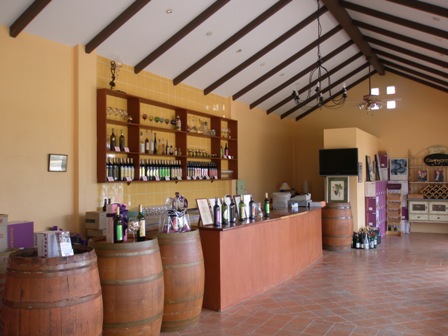
The tasting room of Gran Monte

Another view of the Gran Monte tasting room

The vineyard owner, Mr. Visooth Lohitnavy, in the tasting room

The “normal” product range
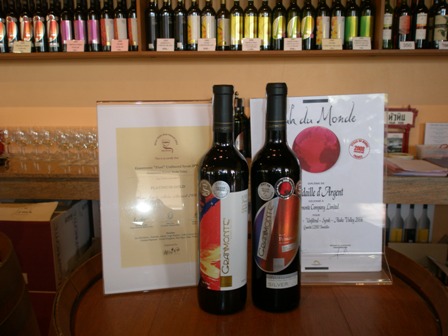
The award winners
I recommend to buy the award winners. They are the best wines. I particularly like the unfiltered Syrah, a great drop, smooth in the mouth, with plenty of fruit and a wonderful explosive finish.
So if you should visit Thailand in the near future, please plan a trip tpo Khao Yai and GranMonte Vineyard. The family of Mr. Vissoth is very enthusiastic and will make you feel very welcome. Below you’ll find the address and a map.
Address:
Granmonte Co,Ltd.
17 / 8 Soi Sukhumvit 6, Sukhumvit Road,
Klongtoey, Bangkok 10110
Tel : 0-2653-1522 Fax : 02-653-1977
Mb. : 08-9169-7766
Marketing@granmonte.com
Address at Khao Yai
Granmonte Vineyard & Wines
52 Moo 9 Phayayen, Pakchong,
Nakornrachasima, Thailand
Tel : 036-227-334-5
Map






 Posted by themanfrommoselriver
Posted by themanfrommoselriver 
